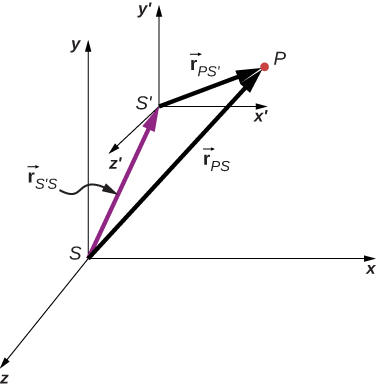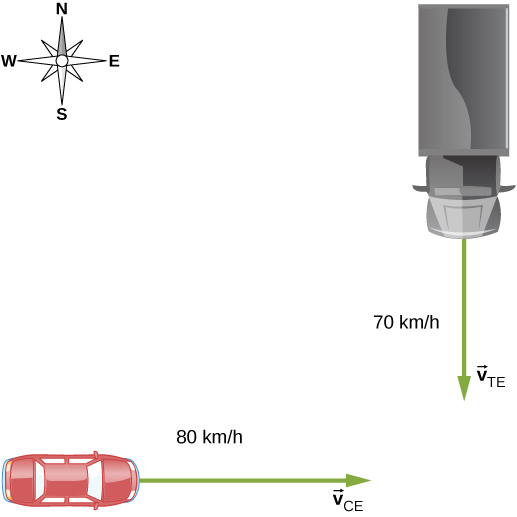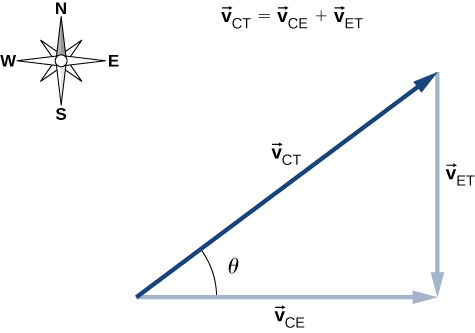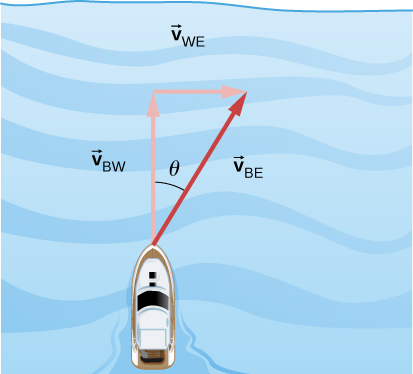| << Chapter < Page | Chapter >> Page > |
Adding the vectors, we find so the person is moving 8 m/s east with respect to Earth. Graphically, this is shown in [link] .

We can now apply these concepts to describing motion in two dimensions. Consider a particle P and reference frames S and as shown in [link] . The position of the origin of as measured in S is the position of P as measured in is and the position of P as measured in S is

From [link] we see that
The relative velocities are the time derivatives of the position vectors. Therefore,
The velocity of a particle relative to S is equal to its velocity relative to plus the velocity of relative to S .
We can extend [link] to any number of reference frames. For particle P with velocities in frames A , B , and C ,
We can also see how the accelerations are related as observed in two reference frames by differentiating [link] :
We see that if the velocity of relative to S is a constant, then and
This says the acceleration of a particle is the same as measured by two observers moving at a constant velocity relative to each other.

Here, is the velocity of the car with respect to the truck, and Earth is the connecting reference frame. Since we have the velocity of the truck with respect to Earth, the negative of this vector is the velocity of Earth with respect to the truck: The vector diagram of this equation is shown in [link] .

We can now solve for the velocity of the car with respect to the truck:
and
Check Your Understanding A boat heads north in still water at 4.5 m/s directly across a river that is running east at 3.0 m/s. What is the velocity of the boat with respect to Earth?
Labeling subscripts for the vector equation, we have B = boat, R = river, and E = Earth. The vector equation becomes
We have right triangle geometry shown in Figure 04_05_BoatRiv_img. Solving for
, we have


Notification Switch
Would you like to follow the 'University physics volume 1' conversation and receive update notifications?